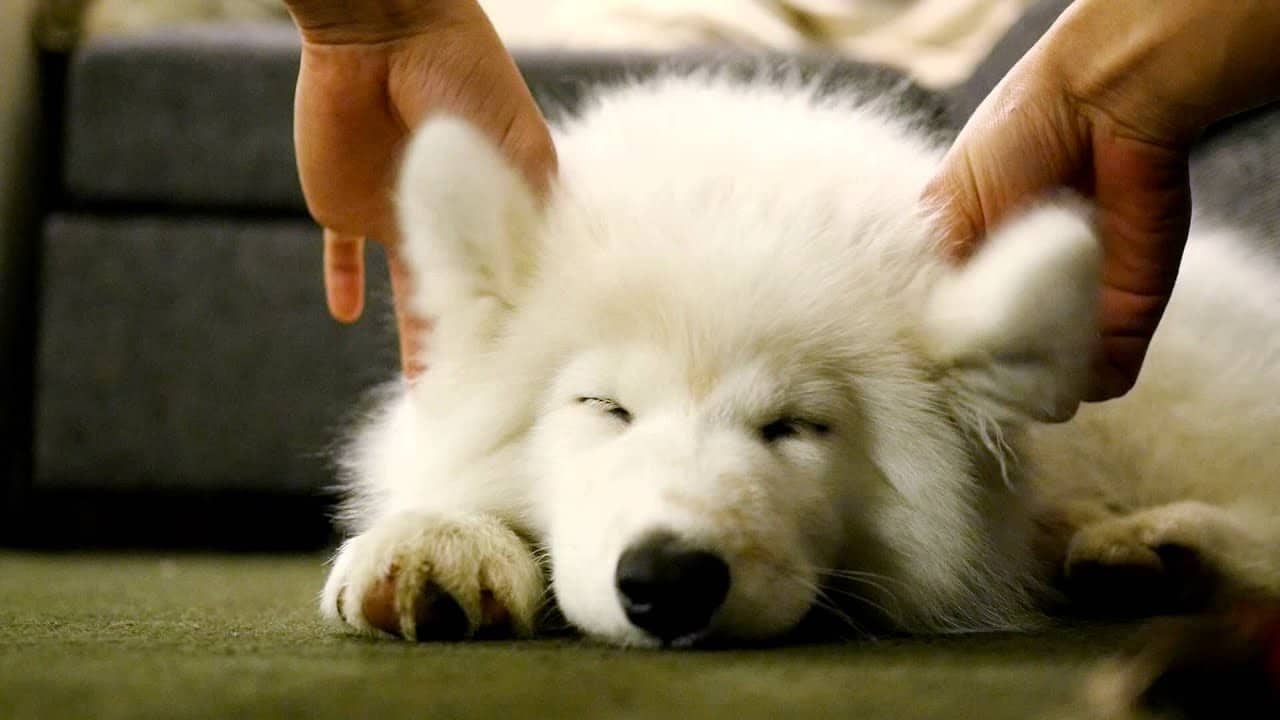The Samoyed’s ears and eyes also require a bit of routine attention. By offering that, you not only keep every nook and cranny of the dog’s body clean, but you may also uncover a budding health problem that may be easily vanquished in the early stages.
Ear Care
Given the structure of the Samoyed’s ears, infections and other such problems here are rare. The dog’s erect prick ears allow ample air circulation that thus prevents the buildup of moisture that can so plaque floppy-eared dogs.
Nevertheless, the Samoyed’s ears, too, deserve and need your attention to keep potential problems at bay.
- The first step is to keep your eye, or rather, your nose, on the ears. Stick your nose into your dog’s ears and take a whiff. You may feel a bit silly, but this is the only way you will learn what the animal’s healthy ear should smell like. Because ear infections and problems often manifest in a strange odor that emanates from the ear canal, by getting acquainted with the scent of the healthy ear you are better equipped to detect the genesis of an unhealthy ear later on.
- Watch for telltale signs of ear discomfort. If the dog begins shaking its head or pawing at an ear incessantly, it is trying to tell you something; take a look at its ears. The culprit may be a flea tickling the ear flap as it meanders through the hairs, or it may be far more serious, such as an embedded foxtail or an infection. Get the dog to the veterinarian for a more complete examination.
- Keep the ears clean at home. Be warned, however, that your job is to clean the ear flaps only, never the delicate interior of the ear, which can be severely damaged if you poke and prod the canal with foreign objects. The ear cleaning with which you must be concerned is occasionally swabbing the inner ear flaps with mineral oil on a cotton ball. This will keep the skin clean and prevent it from over drying.
- In your examinations of your pet’s ears, you may find a profuse growth of hair at the entrance to each ear canal. The hair grows here as a protective measure, keeping insects, dust, and other would-be infiltrators out of the ear’s inner recesses. On some dogs, however, the hair is too thick, in which case the veterinarian may advise you to trim the area a bit to prevent that dreaded buildup of moisture. If you are not so advised, leave the ears alone.
Eye Care
The Samoyed’s eyes require more observation than outright care, but because the windows to the soul may also react to health problems elsewhere in the body, it is the wise owner who keeps a close eye on his or her dog’s peepers.
- Look periodically into your dog’s eyes for a dull or opaque cast to the corneas. While cataracts or eyelash abnormalities can cause signs that indicate actual damage to the eyeball itself, more common is a sudden discharge from the eyes. This may be nothing more than a very visible sign of a simple pollen allergy or the result of a minor malformation of the eye’s structure—or it could be the sign of something more serious either in the eye or elsewhere in the body.
- Have runny eyes or any suspicious eye symptom examined by a veterinarian, preferably a practitioner who specializes in veterinary ophthalmology.
Sympathetic as you are likely to be to your dog’s red, runny eyes, resist the temptation to alleviate such symptoms with drops or ointments made for human eyes unless you are specifically instructed to do so by a veterinarian.

